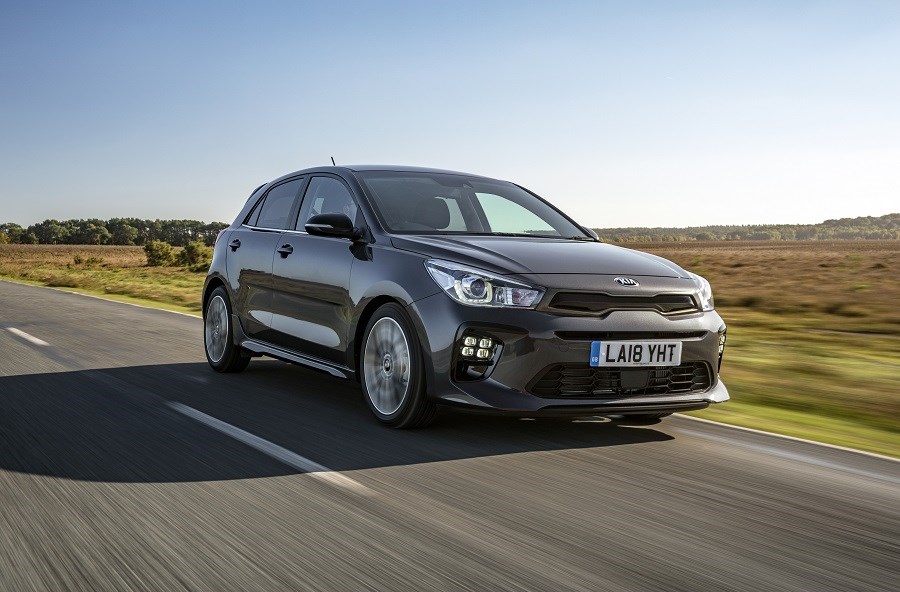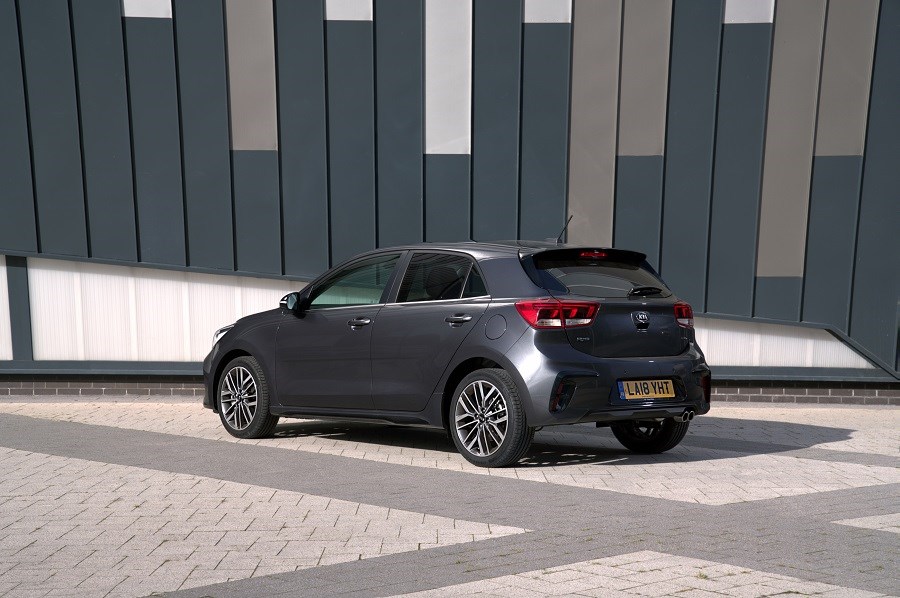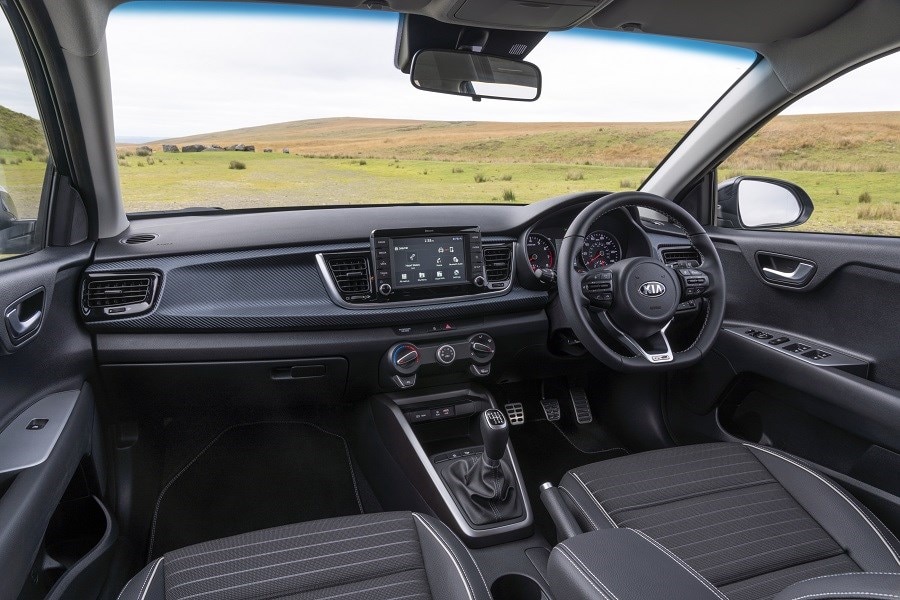Model Review
Kia’s first Rio shook the industry up quite a bit. Arriving on UK shores in 2003, it was by no means a brilliant car, but it did offer unbeatable value for money.
That first car was very much a budget model—it had pared back specification levels, cheap plastics and little in the way of driver appeal, yet at the same time it offered a seven-year warranty and enticingly low list prices, which were key to its appeal. It was a car that brought Kia a whole new generation of buyers, thanks in no small part to its no-nonsense approach.
Now in its fourth generation, the Rio has evolved quite a bit since then, from a gawky mid-sized estate with cheap interior plastics and a basic 1.3-litre powerplant to a much more modern and comfortable car that is now far closer aligned to the supermini market.
With each successive generation, the Rio has got better to drive and far better finished, though even in its current guise it’s one of the more basic cars on the market, aimed at those who really value its combination of practicality, affordability and the peace-of-mind offered by its seven-year warranty.
Latest model
The fourth-generation Rio made its debut in 2017 and is by far the most sophisticated iteration yet, with handsome bodywork that takes several styling cues from the bigger Ceed model.
It also ushers in a new range of engines for the model, giving Rio buyers a wider choice of trim and power choices than ever before. These are by no means as comprehensive as rivals such as the Ford Fiesta or Vauxhall Corsa, though.
Available as a five-door hatch, where the Kia really scores is in terms of practicality. The Rio has always been a class leader in terms of passenger and luggage space, and the latest variant keeps up that tradition.
It now wears Kia’s trademark slim radiator grille and benefits from a raft of safety technology, allowing it to compete against rivals from Ford and VW, which both launched new versions of their popular superminis recently. Smart new LED daytime running lights give the front a new look, while the infotainment system has been redesigned, with the smart seven-inch touchscreen moving in line with class rivals.
The latest Rio also delivers more safety and tech kit than ever before, as well as Kia’s celebrated seven-year warranty. It’s a car that won’t set the world on fire, but will undoubtedly prove a satisfying, robust and ultimately rewarding ownership experience for those who like to keep their motoring costs under control.
Value for money
Offering more for the money is very much key to the Rio’s appeal, so it’s no surprise to see that the range kicks off at just £12,220. For that, you get a well-equipped car, with standard equipment including Bluetooth, air-con, electric windows, USB integration and steering wheel radio controls.
At each price point, Kia aims to deliver the best value for money on offer in each class, so the Rio has a comprehensive array of standard kit across the board.
In addition, it has a number of new safety features including advanced driver assistance systems—a first for a Kia in this class.
All Rio’s also get Kia’s quibble-free seven-year, 100,000-mile warranty, which remains one of the best back-up packages on the market and is responsible for bringing thousands of buyers into the Kia brand which has become a byword for peace-of-mind and hassle-free economical motoring.
Fuel economy is fairly good across the board, and, while not class-leading, it is certainly class-competitive, with up to 62.8mpg depending on model and engine variant.
That long warranty also helps residual values hold fairly firm. A Rio might not be as desirable as a more mainstream supermini such as a Fiesta, Polo or Clio on the used market, but it’s still regarded as a sensible choice of used car, which means values hold up pretty well.
Looks and image
The latest Rio is by far the best-looking small Kia yet, with a fresh face that adopts the narrow grille and squared-off headlights of the larger Ceed. The look is offset by square-edge daytime running lights, giving it a bold face.
That purposeful look doesn’t continue, though. From the rear, the Rio could be any small hatchback, with a rather anonymous style while in profile it’s a classic five-door hatchback which is nothing special yet utterly inoffensive.
Some of the wheel choices aren’t great. The standard steel wheels on the entry-level car look okay, but the 16-inch alloys on mid-rangers struggle to fill the arches and look cheap compared to the rest of the car.
While it won’t set the world on fire, the Rio is neat and inoffensive, and that’s exactly what most buyers want.
The cabin of the Rio is neatly executed, and all of the major controls are logically positioned. The new seven-inch touchscreen also makes the Rio’s interior look bang up-to-date, on a par with rivals such as the Ford Fiesta.
It’s spacious too, with plenty of head, leg and shoulder room in the front and room for two adults in the rear.
Some of the plastics feel a bit cheap though, especially on the dash, which has a number of hard, flat black plastic surfaces. By contrast, the seat fabrics and other areas of soft trim are all very pleasant indeed.
Space and practicality
Practicality is one of the Rio’s big plus points, with room for five adults and a boot that is bigger than that offered by most superminis. A luggage capacity of 325 litres with the rear seats in situ would be an impressive achievement in the class above, though a high load lip does impact slightly on its usability.
Space in the rear is good for a supermini, too. Five-up will always be a bit of a squeeze in a car of this size, but with two rear passengers there’s sufficient head, leg and shoulder room to sit in relative comfort.
However, storage is good. Both the front and rear door pockets are big enough to hold a 1.5-litre drinks bottle, while there are also additional cupholders in the front behind the gear lever. All but the base model feature a cubby box between the seats and all models get a couple of handy slots beneath the heater controls, ideal for holding your wallet, phone or travel sweets.
A multi-way adjustable driver’s seat makes it easy to get comfortable (there’s no lumbar support option) while the driving position also affords good forward visibility, with not much intrusion from the A-pillars.
Engines
Kia dropped all diesel Rios last year due to a lack of demand, so now there are just four petrol engines to choose from.
The entry level is a normally aspirated 1.25-litre unit with 83bhp on offer, offering 51.4mpg on the combined cycle (NEDC) and a top speed of 107mph. 0-60mph takes 12.5 seconds.
A 98bhp 1.4-litre unit is next up, with 49.5mpg and 0-60mph in 11.8 seconds, with a top speed of 114mph.
The range-topping engine is actually the smallest with a 1.0-litre turbocharged unit with either 99bhp or 118bhp.
The least potent of the two offers 0-60mph in 10.3 secs with a top speed of 116mph, along with a combined figure of 56.5mpg, while the flagship unit reduces the 0-60mph time to a nippy 9.5 seconds, with a top speed of 118mph and 55.4mpg.
Running costs
All Rio’s are Euro 6 compliant, but CO2 emissions aren’t the best in class with the 1.0-litre turbo faring best at 114g/km. There are no sub 100g/km options and the 1.4-litre option emits 143g/km, so falls into a higher road tax bracket than most superminis.
Good levels of active and passive safety along with excellent security help to keep insurance groups low, as does the general buyer demographic for the Rio, which is hardly ‘boy racer.’ They range from group 2-10, making the Rio one of the most affordable small cars to place on cover.
An affordable purchase price, low depreciation and that long warranty also make it an appealing prospect for those who like to keep their motoring costs fixed.
Things to look for
The current Rio has been on the market for only a short time, so there are very few reported problems. However, the previous generation model has proven to be extremely reliable in service, so aside from the usual checks on ownership, outstanding finance and possible accident damage, there is very little cause for concern.
Rivals
Kia would like to think that the Rio is squaring up to the Ford Fiesta, Renault Clio and Volkswagen Polo in the market and to the cost-conscious buyer, it probably is. However, the Kia brand won’t have the same resonance with younger buyers although the brand has made big strides in this area in recent years.
More obvious rivals are the Vauxhall Corsa, Hyundai i20 and Honda Jazz, which are often the rational rather than emotional supermini choices. The Rio is a good alternative to any of these.
Depreciation
So long as the seven-year warranty still has some time left on the clock, the Rio holds its value pretty well. Over a three-year period, you can expect it to retain around 40 per cent of its new value.
However, as a longer term ownership prospect, the depreciation curve will get steeper later in the car’s life. If you like to hold on to you cars for a while, you need to factor this in.





